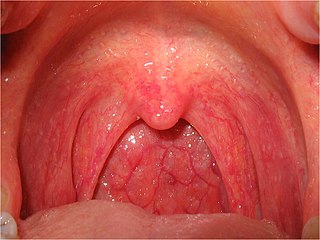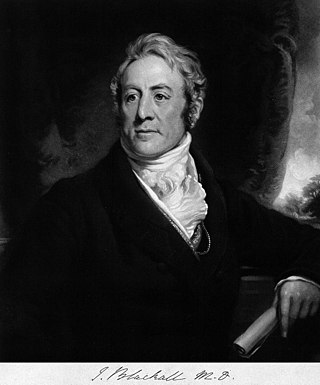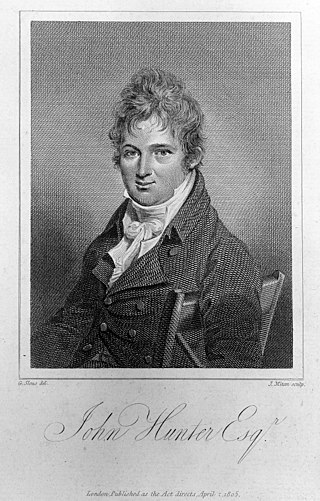
John Huxham (1692–1768) was an English physician, a provincial doctor notable for his study of fevers. In 1750 Huxham published his Essay on Fevers and in 1755 received the Copley Medal for his contribution to medicine. [1]

John Huxham (1692–1768) was an English physician, a provincial doctor notable for his study of fevers. In 1750 Huxham published his Essay on Fevers and in 1755 received the Copley Medal for his contribution to medicine. [1]
Huxham was born close to Totnes, Devon, the son of a butcher from nearby Harberton. [2] He was orphaned in early life and became the ward of a non-conformist minister. [3] He attended Newton Abbot grammar school using funds from his father's will. Huxham then attended Exeter academy, the university of Leyden and finishing his M.D. at the university of Rheims. (Due to his religion he would not have been able to attend Universities in Oxford or Cambridge.) [2]
He returned to Totnes and started a medical practice soon after in Plymouth. His progress to fame was slow but he eventually became the city's most respected medical practitioner.
In 1723, James Jurin, one of the secretaries of the Royal Society, asked for volunteers to keep daily records of their observations of the weather including readings of the barometric pressure, temperature, rainfall, and direction and strength of the wind. Their observations were to be submitted annually to the secretaries of the society for collation and analysis. In 1724 Huxham began to keep such records and, from 1728 on until 1748, he noted monthly the prevalence of epidemic diseases. These records he published in two volumes. He was elected Fellow of the Royal Society in 1739. [1]
Huxham was perhaps the first in Britain to classify the disease influenza. He is also associated with diagnosis of scurvy and for a recommended cure of drinking cider. He is also remembered for Tinct. cort. Peruv. Huxham, a tincture of Cinchona bark used for ulcerous sore throat (possibly diphtheria). [4]
He married Ellen Corham, and after her death Elizabeth Harris, who also died before him. He left two daughters and one son, John Corham Huxham, who graduated at Exeter College, Oxford, became F.R.S., and edited several of his father's works. He died on 11 August 1768. [1]

Streptococcal pharyngitis, also known as streptococcal sore throat(strep throat), is pharyngitis (an infection of the pharynx, the back of the throat) caused by Streptococcus pyogenes, a gram-positive, group A streptococcus. Common symptoms include fever, sore throat, red tonsils, and enlarged lymph nodes in the front of the neck. A headache and nausea or vomiting may also occur. Some develop a sandpaper-like rash which is known as scarlet fever. Symptoms typically begin one to three days after exposure and last seven to ten days.

Pharyngitis is inflammation of the back of the throat, known as the pharynx. It typically results in a sore throat and fever. Other symptoms may include a runny nose, cough, headache, difficulty swallowing, swollen lymph nodes, and a hoarse voice. Symptoms usually last 3–5 days, but can be longer depending on cause. Complications can include sinusitis and acute otitis media. Pharyngitis is a type of upper respiratory tract infection.

Benjamin Rush was an American revolutionary, a Founding Father of the United States and signatory to the U.S. Declaration of Independence, and a civic leader in Philadelphia, where he was a physician, politician, social reformer, humanitarian, educator, and the founder of Dickinson College. Rush was a Pennsylvania delegate to the Continental Congress. He later described his efforts in support of the American Revolution, saying: "He aimed right." He served as surgeon general of the Continental Army and became a professor of chemistry, medical theory, and clinical practice at the University of Pennsylvania.
Dr William Charles Wells FRS FRSE FRCP was a Scottish-American physician and printer. He lived a life of extraordinary variety, did some notable medical research, and made the first clear statement about natural selection. He applied the idea to the origin of different skin colours in human races, and from the context it seems he thought it might be applied more widely. Charles Darwin said: "[Wells] distinctly recognises the principle of natural selection, and this is the first recognition which has been indicated".

William Heberden FRS was an English physician.

John Fothergill FRS was an English physician, plant collector, philanthropist and Quaker. His medical writings were influential, and he built up a sizeable botanic garden in what is now West Ham Park in London.

Thomas Beddoes was an English physician and scientific writer. He was born in Shifnal, Shropshire and died in Bristol fifteen years after opening his medical practice there. He was a reforming practitioner and teacher of medicine, and an associate of leading scientific figures. He worked to treat tuberculosis.
John Haygarth FRS FRSE was an important 18th-century British physician who discovered new ways to prevent the spread of fever among patients and reduce the mortality rate of smallpox.

John Blackall M.A., M.D., FRCP was an English physician.

William Musgrave was a British physician and antiquary.

John Wall, was an English physician, one of the founders of the Worcester Royal Infirmary and the Royal Worcester porcelain works. He was also involved in the development of Malvern as a spa town.

William Falconer was an English physician, miscellaneous writer, and also Fellow of the Royal Society.
Sir William Fordyce was a Scottish physician.

Richard Pearson was an English physician and medical writer.

Robert Robertson (1742–1829) was a British surgeon and a Fellow of the Royal Society.

Thomas Kirkland M.D. (1721–1798) was an English physician and medical writer.
Sir Charles Scudamore (1779–1849) was an English physician, known for his writings on gout.

Dr John Hunter FRSE (1754–1809) was a Scottish physician linked to Jamaica.
John Clark M.D. (1744–1805) was a Scottish physician, known also as a medical philanthropist in Newcastle upon Tyne.

John Bard was an American physician notable for being the first in the United States to participate in a systematic dissection for the purpose of instruction and the first in the country to report a case of extra-uterine pregnancy.